Jason deCaires Taylor (read our articles about his global underwater art here, and explore ALL of the underwater museums here) has done it again!
In 2006, Jason deCaires Taylor created The Molinere Underwater Sculpture Park, which was the first of its kind in the world and the inception for all his subsequent projects. Last week, the park had a major upgrade and extention as they added a new series, which includes 27 works.
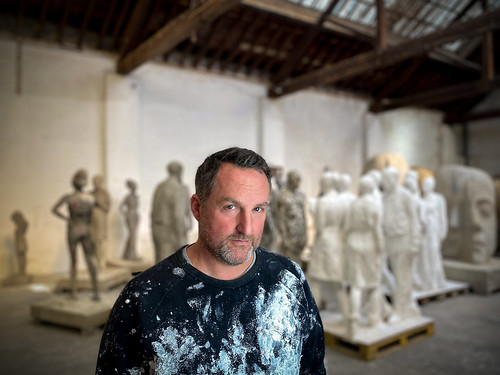
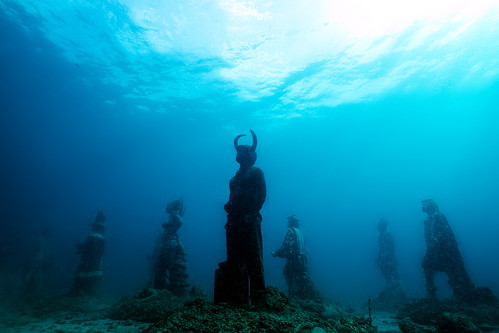
The Coral Carnival series draws inspiration from Grenada's vibrant annual carnival, called Spicemas. The sculptural procession, which was created in collaboration with a group of talented local artists, portrays a range of symbolic carnival characters each celebrating the country's rich culture and history.

Vieux Corps (known locally as Vecko) typically feature tall pointed hats, wooden shoes, and full-length cloaks made from black, red, or purple cloth. Their faces, concealed with wire mesh masks, symbolise the loss of identity endured through slavery. Boots are fitted with large wooden soles to create a loud noise as they stomp through towns and villages. In these underwater creations, the traditional masks and cloaks are customised with a variety of organic pigments such as squid ink, cochineal, and turmeric on a calcium carbonate base.

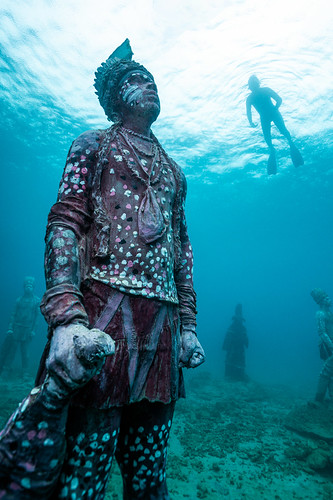
The Wild Indian character originates from the Amerindian heritage of immigrants from South America. Each character dressed in colourful clothing includes a short skirt, a tall feathered head dress, and beaded jewellery. Their faces and bodies are hand-painted to include traditional details.
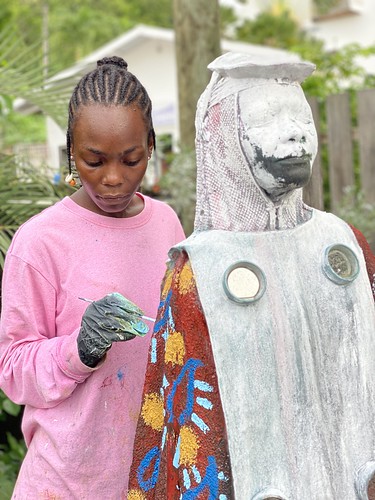
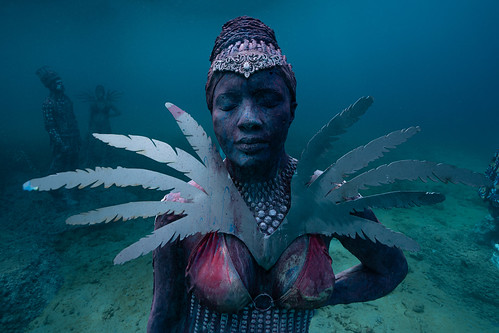
Jab Jab has been one of the main characters in Grenada's cultural festivities for many years and is unique to the island. Although the name translates to "double devil," the masqueraders are not the devils themselves or related to demonic culture. Instead, they are satirising the thoughts and actions of slave masters from the past. Local artists sculpted traditional elements for each Jab Jab to carry - serpents, animal skulls, and dead fish - then painted the sculptures with organic black squid ink pigment to represent the molasses or engine oil that masqueraders traditionally cover their bodies in during Spicemas.

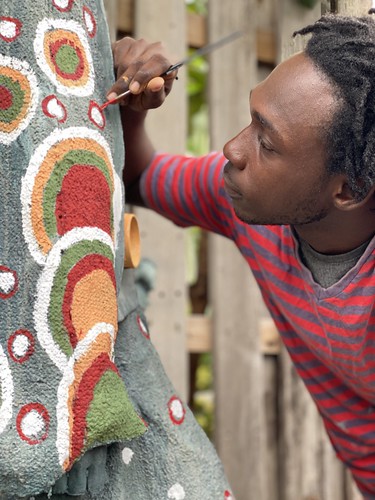
The sculptural works were created using high-grade stainless steel and pH-neutral marine cement with diverse habitat spaces integrated into each design for marine creatures to inhabit. Placed on the sea floor in a linear procession, Coral Carnival extends the collection of many of Taylor's previous works at Te Moliniere Underwater Sculpture Park. It ranges from 3-7m and is suitable to both snorkelers and divers.

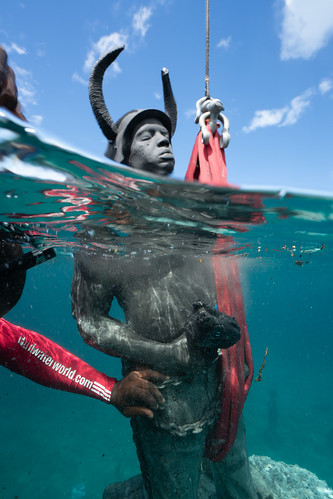
Installation details:
- 25 Life size sculptures, life-cast from members of the local community
- The new pieces are only 3m from the surface and can be seen easily by snorkelers
- The bases of the sculptures are intended to look like rock formations and include holes and shelters for marine life such as octopuses and lobsters.
- A series of new moorings have been installed to ensure the local reef is not damaged by anchoring.
- This is the frst time colour has been used on underwater sculptures and uses a calcium carbonate base with natural pigments.


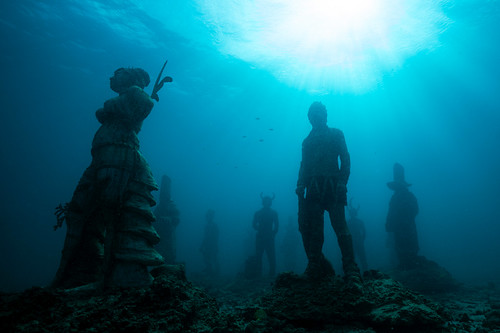
The project was commissioned by the Grenadian Ministry of Implementation and Tourism and funded by a World Bank initiative.
All photos and information contained herein courtesy and copyright Jason deCaires Taylor
